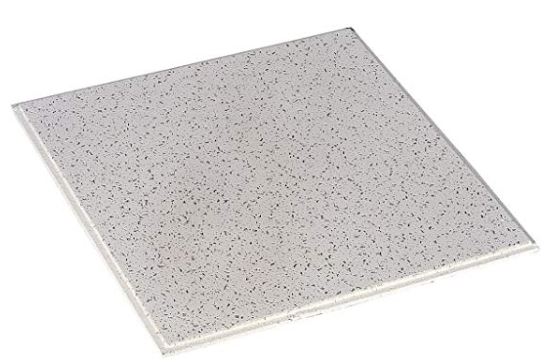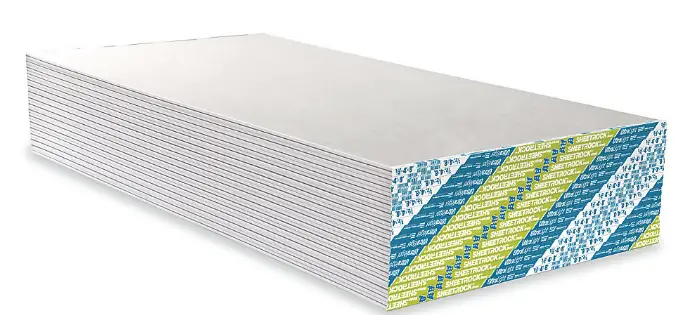
If you are living in an apartment, then it is very crucial to the soundproof ceiling from the neighbour living on top of your apartment, no matter the neighbour is noisy or not.
Noise can be categorized into two parts one is airborne noise and other is impact noise, by using soundproofing materials, we can fix the issue of airborne noise but it is very hard to fix the impact noise.
Impact noise can be generated from two most reasons:
- From the flooring.
- From the ceiling.
By the way, if you have missed how to minimize impact noise from the floor then do not miss how to soundproof flooring guide.
In general, impact noise is the noise generated due to impact or collision of two objects and that is why it is also known as structure-borne noise and, the best reason for that is footsteps or footfalls or fall of any object on the ceiling.
You can not ask the person living on top of your apartment to not shout louder or not walk fast as if he is mature enough, he might have understood very first.
So you have to fix or isolate your ceiling from the middle layer main ceiling of both apartments and that can be achieved by using a soundproof ceiling.
This can be achieved by using the drywalls, resilient channel, insulation, or creating a new layer of the ceiling on top of the existing, but how and which one is the best effective way for the soundproof ceiling?
But if you are also struggling with the flooring and willing for a solution on how to soundproof between the existing floor then must read the suggested guide.
You should not worry about the same, as I already did research and did implement all on my bedroom and house ceiling and the results were very effective.
Hence in this guide, we will learn how to soundproof the existing ceiling to minimize or reduce the impact noise coming from the top apartments.
Well, I decided to share with you 5 ways which are effective and you can work on each one by one or maybe the best which you want to choose.
Table of Contents
5 Effective Tips to soundproof Ceiling
While considering the wall, the soundproofing techniques are closely similar to the ceiling but the only difference in the types of noise, as in-wall we are more focused on airborne noise, however, the ceiling is more focused around impact noise.
So let me highlight the top 5 tips which can really fix soundproofing of the existing ceiling.
Fix the Holes or Gaps on Ceiling
This is a rare case that you may be aware of any issues in terms of holes or gaps in the ceiling but yes at joints or the area where any electric cable connection is going on can have some spaces left to cross the air.
If air can pass through that means there is an opportunity for noise to pass through the same, so find out such holes on the ceiling and try to fix them using the acoustic sealant or green glue (Amazon).
These may not match with the color of the ceiling but the quite effective acoustic solution to block the unwanted noise coming above your head. Fixing the holes is the most affordable solution but this is not always the case.
The primary issue is with soundproofing existing ceiling major area on which people walks and for that, you would need below suggestions.
Use the acoustic foam panels on the ceiling
The use of acoustic foam panels is to absorb the soundwaves and they have a noise reflection coefficient (NRC) of 0.95, which means they can absorb 95% of the noise waves and reflect back only 5%.
There seems to be an effective solution to use or stick with the existing ceiling but it works only if you have a flat surface for the ceiling.
If you are familiar with acoustic foam panels then they are available in different tiles shapes.
Ideally, people use such foams on their studio walls to absorb the soundwaves but for the ceiling, you can go with acoustic foam panels in tiles shape which are available in different colored shapes.

In my list, the very best set of 50 acoustic foam panels are by ship xnfurn (Amazon), which are available in varieties of sizes.
- SOUNDPROOFING SOLUTION: These acoustic foam panels are...
- VERSATILE DESIGN: The foam panels measure 12 inches x 12...
- DURABLE CONSTRUCTION: Made of high density sound absorbing...
Last updated on 2025-06-06/Affiliate Links/ Images from Amazon
But the tricky job to use acoustic foam panel is to stick them to the ceiling, which can be achieved using liquid adhesive glue by Auralex acoustic (Amazon).
If you are new and not sure which types of acoustic foam panel you should buy to deal with noise then do check out types of acoustic foams guide.
In addition, I also advise using the bass traps at the corner to reduce the low-frequency noise.
Increase the density or Mass of the ceiling using MLV
No matter the noise is from impact noise or from the airborne the best way to block the incoming noise is by putting the high-density materials in the transmission path of sound waves.
We already discussed, what is noise and how it travels faster in the solid medium as compared to air medium and the only thing which can control the noise transmission is the mass or density, which can be achieved by adding extra mass on the existing wall.

The mass and weight of acoustic foam panels are good enough to drop down at some point in the future, hence the new best solution is to use mass loaded vinyl (MLV) the best industrial material with exceptional mass to thickness ratio.
It is expensive as compared to the acoustic foam panel but the most effective solution to block the noise, these days almost every industry is using this material to block unwanted noise.
It is adhesive and flexible in nature, so you can cut in the size and shape you want and can stick this to the ceiling. The best part is, this will cover all the small holes and gaps on the wall and ceiling.
Ideally, it is available in black color but different color variants are available by different sellers for good looking soundproof ceiling.
To learn more about, what is mass loaded vinyl (MLV) and how it works I suggest going through the detailed guide on Mass loaded vinyl the affordable solution for quick and guaranteed noise-proof solutions.
Use the second layer of Drywall using Resilient channel
We have seen the basic architecture of the ceiling where the most important part is the joist on top of which complete ceiling is based on. Just below joist few ceilings are open and you can view studs or in some cases covered with drywall.
Drywall will definitely increase the density of the ceiling but the use of drywall can also reduce the height of the room by a minimum of 6 inches.
Conventional drywall is not effective enough to block the noise vibrations hence the best suggestion is to use the soundproof drywall which has a sound transmission class (STC) score of more than 50 and best to block the noise.

But if your plan is to directly screw drywall with the studs or joist than it could not be an effective solution as the best-suggested solution is to use the resilient channel on top of the joist and screw drywall on top of that but why?
The resilient channel creates an air pocket of 1/2″ inch, which will be like a decoupling zone and very much helpful to trap the airborne noise as noise coming from the top layer, comes to air gap then again drywall will block it with high density in result most of the energy gets dissipated.
Hence try to use the second layer on your existing ceiling for the guaranteed soundproofing of the ceiling.
Use the soundproof ceiling insulation slab in the middle of two layers
Insulation materials are mainly used between the two layers and in our case, we can use in between the studs used on top of the joist or in between the drywall and main ceiling vacant space.
While we talk about the soundproof ceiling insulation materials then the very famous is batt or foam insulation which are made of fiberglass woven strands and very easy to fix the vacant space in between studs area. This improves the density and blocker for most of the noise.
Hence idea is to get spread out the major area which is vacant on top of the drywall using either foam spray insulation or batt insulation. I would recommend going through the detailed guide on what is insulation and their types.
SoundProof Ceiling Related Queries
I did use all the above tips to make soundproof ceiling of my house and the noise cancellation was very effective but you may have a couple of queries so let me answer those.
Can you soundproof the existing ceiling?
All the above-explained methods are quite effective, no matter you have an existing ceiling or new, you can use the below strategy to soundproof the ceiling.
- Set studs on top of the joist to create a gap for disconnecting the direct contact of the sub-layer from the joist.
- Use soundproof insulations to fill the vacant space in between the studs.
- Use resilient channels on top of the studs to avoid further direct contact of drywall.
- Use soundproof drywall to screw against the resilient channel.
- Ultimately, use Mass loaded vinyl on top of the drywall to block the noise as an extra barrier.
- You can stick the acoustic panel on top of the drywall which decorates the ceiling and ultimate soundproofing your ceiling.
If you already have drywall then using the resilient channel, you can create another sub-layer and fill spaces with insulation for perfect insulation and decoupling for noise this improves the noise cancellation ability of soundproof ceiling.
How much does it cost to soundproof an existing or new ceiling?
I have collected references from different sources and as a result, I found the cost will range between $1000-$2500 with an average cost falling around$1600.
These include $180 -$250 for materials, $20 to $30 for tools and around $200-$300 for labor. Well, this keeps changing as the area of the ceiling and quality materials you use will really impact the cost.
I feel this article on the average cost for a soundproofing house may help you to identify the cost involved behind fixing the different areas of the house.
Does Ceiling insulation reduce noise?
Insulation primary job is to create a blocker for noise and why not noise insulation, as we already learned earlier if you will use these insulations in between the studs or the empty spaces, it increases density.
The higher the density of any barrier the more will be the ability of that barrier to block the noise and the same case will apply in the case of the ceiling.
My View on Soundproof ceiling
It is very crucial to fix the unwanted noise coming from the neighbor living above your apartment, for which either you can complain or may require permanent fixes.
Hence the permanent solution is to use the above tips to create a soundproof ceiling, where your primary focus is to reduce the impact noise than the airborne noise.
If you are comfortable enough with acoustic foam panel then that is good but I would recommend adding a layer of drywall which will create space for proper insulation and decoupling zone for a soundproof ceiling.
Maybe the tips shared above will work for you as now I am enjoying my peaceful life and this article may help you to solve your problem, so do share your experiences in the comment box.
